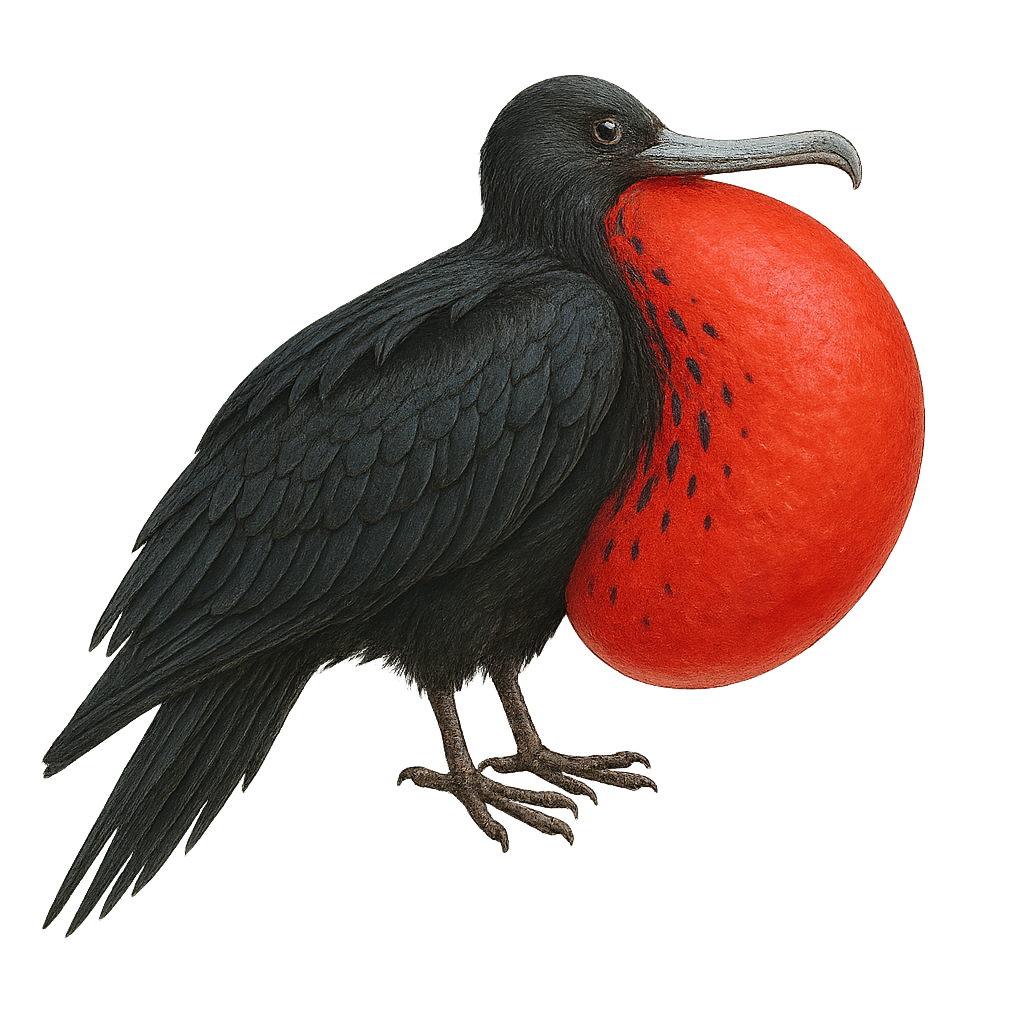Your wildlife photography guide.
Explore the great frigatebird in detail, study its behavior, prepare your shots.
Where to observe and photograph the great frigatebird in the wild
Learn where and when to spot the great frigatebird in the wild, how to identify the species based on distinctive features, and what natural environments it inhabits. The WildlifePhotographer app offers tailored photography tips that reflect the great frigatebird’s behavior, helping you capture better wildlife images. Explore the full species profile for key information including description, habitat, active periods, and approach techniques.
Great Frigatebird
Scientific name: Fregata minor

IUCN Status: Least Concern
Family: FREGATIDAE
Group: Birds
Sensitivity to human approach: Suspicious
Minimum approach distance: 10 m
Courtship display: March to May
Incubation: 50-55 jours
Hatchings: April to July
Habitat:
Tropical islands, coastal areas, mangroves
Activity period :
Primarily active during the day, with peak activity in the morning and late afternoon.
Identification and description:
The Great Frigatebird, or Fregata minor, is an impressive seabird known for its large size and wingspan, which can reach up to 2.3 meters. This large black bird is easily recognizable by its slender silhouette and hooked beak. Males display a bright red gular pouch that they inflate to attract females. Frigatebirds are masters of flight, capable of staying aloft for several days thanks to their long, slender wings. They primarily feed on fish and squid, which they catch in flight or by harassing other birds to steal their prey. They are mainly found in the tropical and subtropical regions of the Pacific and Indian Oceans.
Recommended lens:
400 mm – adjust based on distance, desired framing (portrait or habitat), and approach conditions.
Photography tips:
To photograph the Great Frigatebird, it is advisable to use a telephoto lens of at least 400mm to capture detailed images without disturbing the bird. The best opportunities often arise when frigatebirds are gliding over the water or gathering in colonies on islands. Opt for early morning or late afternoon hours to benefit from soft lighting and avoid harsh shadows. Be patient and discreet to observe their natural behavior, especially the males' courtship displays.
The WildlifePhotographer App is coming soon!
Be the first to explore the best nature spots, track rutting seasons, log your observations, and observe more wildlife.
Already 1 430 wildlife lovers subscribed worldwide

